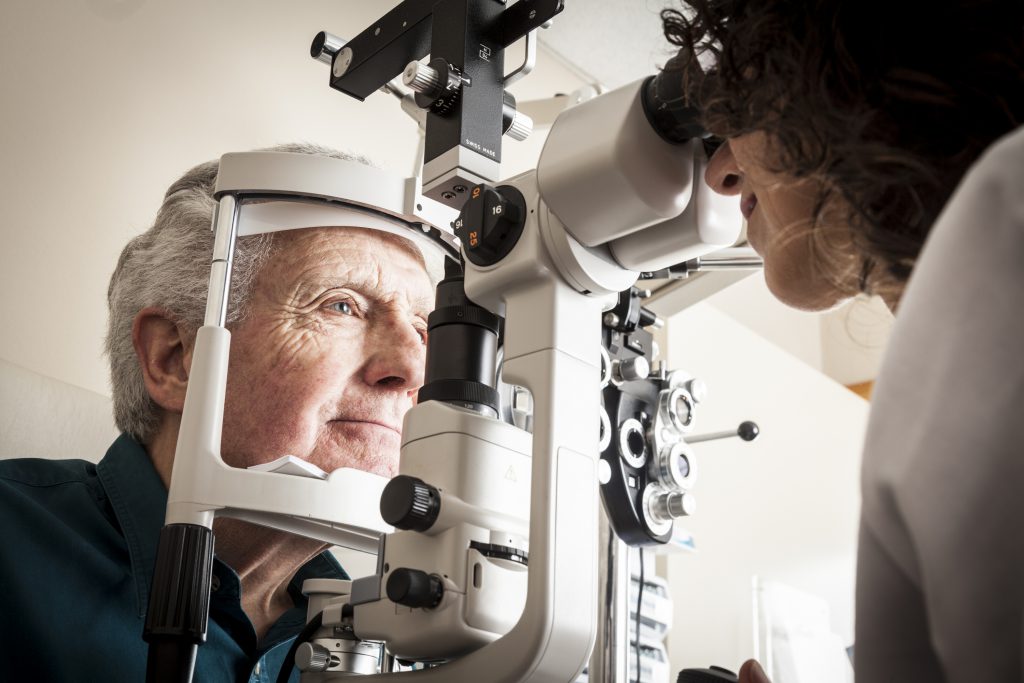
Written By: T. Daniel Walters PT, DPT, GCS
Age-Related Macular Degeneration (AMD) affects more than 12 million Americans and can lead to low vision. AMD becomes more prevalent after the age of 55 and often results in various levels of disability. It’s a condition we commonly run across in clinical practice that requires intervention.
Some interesting facts about AMD:
- It affects central vision
- It can occur with visual acuities from 20/20 to 2/400 and beyond
- There are 2 types of AMD: Wet and Dry
- People with AMD also tend to have loss of contrast sensitivity and detail vision, making it difficult to navigate living environments and perform daily activities
The National Eye Institute defines low vision as “Any reduction in visual function that cannot be corrected with standard refractive lenses, therapeutic prescriptions or surgical treatment and which limits an individual from performing a visually guided task”. Also when establishing interventions, consider impairments in visual field, contrast and glare sensitivity, color perception and depth perception.
Here are some suggestions on how to help your clients with AMD and low vision: 
- Bright detail on dark backgrounds is easier to distinguish
- For example, yellow buttons on a black TV remote, dinner plates contrasting with the table cloth, table cloth contrasting with the floor
- Natural light is always the best alternative to perform daily activities, it brings out contrast!
- Magnifiers and bump dot stickers are handy compensatory aids
- To the right is a photo of some bump dot stickers that a legally-blind client of mine uses to identify and orient the key to his apartment
Interested in learning more about AMD and low vision? If so, come check out my new course, Low Vision, which is being offered as a 6-hour live in-person class! Also, check out the American Foundation for the Blind and the National Eye Institute for more fantastic resources. Thanks for reading!
